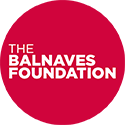Arthur Streeton
Sydney Harbour, 1895

The Balnaves Gift
Arthur Streeton, along with Tom Roberts and Frederick McCubbin is widely considered to be one of the fathers of Impressionism in Australia. Views of Sydney Harbour were among his favourite subjects, with the artist returning to the foreshore time and again throughout his career. Streeton’s panoramic paintings such as in Sydney Harbour (1895) with its azure blue and view towards the Sydney Heads are considered to be some of his most outstanding early works.
Born in Geelong, Victoria in 1867, Streeton took night classes at the National Gallery school Melbourne from 1882-1887. For two years during this time he worked as an apprentice lithographer with George Troedel & Co. in Melbourne. In 1886 he met Tom Roberts and Frederick McCubbin and began painting en plein air at their paintings camps around Heidelberg and Box Hill on the outskirts of Melbourne, where they were joined by Charles Condor.
At the tender age of twenty two Streeton exhibited about forty paintings in the now legendary ‘9 x 5 Impressions’ exhibition of 1889. The following year he moved to Sydney and stayed with Tom Roberts at a second en plein air painters camp in Mosman at Sirius Cove. It is from this base that some of Streeton’s most iconic Impressionist works were made. Sydney Harbour (1895) is painted on the long narrow milliner’s or draper’s boards which Streeton favoured for economic reasons – they were supplied by his friend Reuben Brasch of the wealthy Brasch family.
Sydney Harbour (1895) was painted during Streeton’s time at Curlew Camp, Sirius Cove. Near the entrance to the Taronga Zoo, the view from the Curlew Camp looks East towards the Heads. In this artwork, Streeton captures a romantic vision of a working harbour: the bright sunlight sparkling on the harbour’s surface and bathing the headland at Watson’s Bay, as a ferry steams across the water and white sails are reflected in the deep azure of the sea. It is vital image with a wonderful sense of atmosphere. The artwork is presented in its original decorative cedar frame.
During his 6 years in Sydney Streeton became well known for his lyrical paintings of Sydney Harbour, the Blue Mountains and the Hawkesbury. He left for England in 1897 and spent a number of years abroad, with stints in Cairo and Naples, as well as Italy and France. He was an official war artist in World War 1, and returned to Australia in 1923 where he went on to paint the iconic sunny pastoral landscapes he is best known for. His heroic images of the Australian outback were much favoured and became symbolic of
the rise of a conservative Australian nationalism in the early twentieth century.
Oil on canvas
19cm x 61cm




